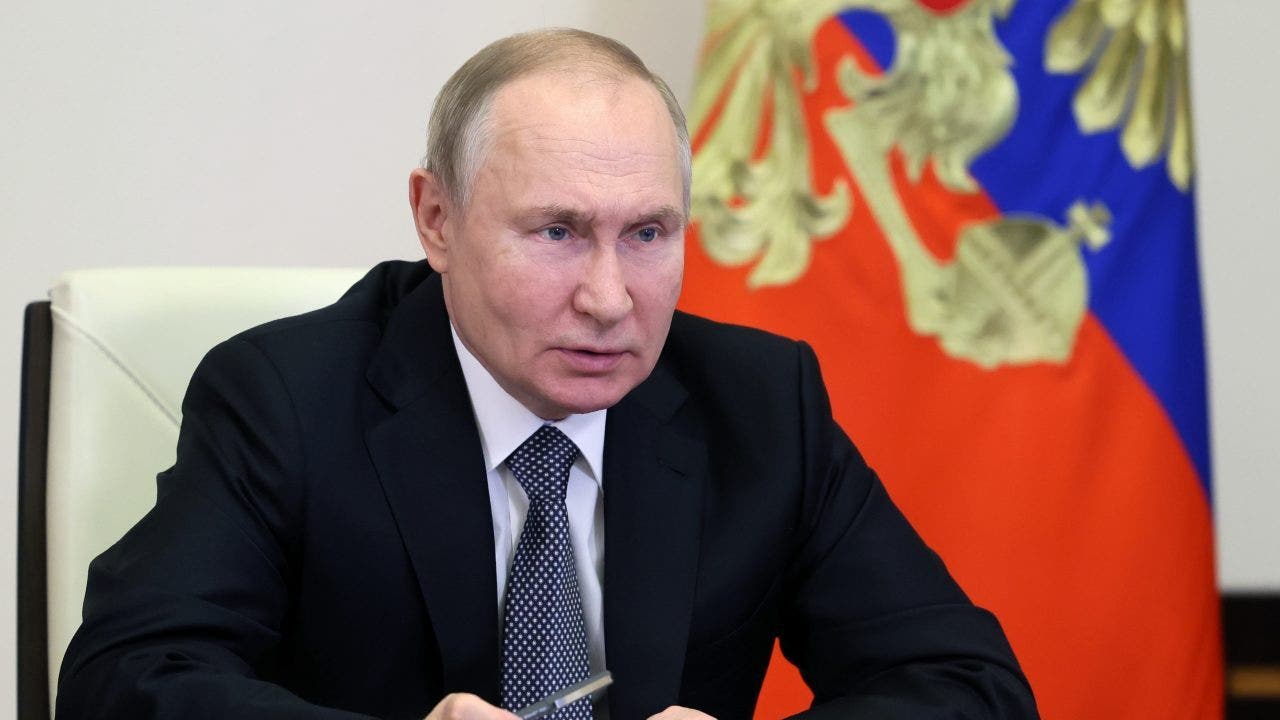Finance
More US sanctions against Russia coming soon

Deputy Treasury Secretary Wally Adeyemo says the U.S. and its allies will slap more sanctions on Russia as a result of its ongoing invasion of Ukraine.
He did not offer a timeline but told FOX Business correspondent Edward Lawrence in an exclusive interview, “There’s more that we’re going to do. There’s more that we have to do to make sure that Russia has less access to revenues so that they can’t fight this unjustifiable war.”
UKRAINIAN DAM DESTRUCTION SENDS GLOBAL PRICES OF WHEAT, CORN SOARING
Adeyemo basically acts as the CEO spearheading national security concerns for the Biden administration within the Treasury Department. He said he sees the sanctions working to force Russia into hard choices: “For example, the Russian sovereign wealth fund, which is the body of one of money they’ve built up to try to protect their economy instead of being able to use the sovereign wealth fund to fund their military, they’ve had to put aside money from the sovereign wealth fund to fund their reinsurance company, which is being used to reinsure Russian ships. They can’t get Western insurance in order to sell oil.”
Adeyemo could not offer a precise timeline for a Russian financial breaking point.
The invasion started on Feb. 24, 2022, and shows no signs of slowing down. According to Rosstat (Federal State Statistics Service), the Russian economy shrank 1.9% during the first quarter of 2023. The Russian economy grew 3% in the first quarter of 2022. Adeyemo sees sanctions as one tool as part of a larger strategy that includes diplomacy and arming Ukrainians with weapons.
The Treasury official offered a stern warning to China for its help to Russia during the conflict.
UKRAINIAN NUCLEAR PLANT IN RUSSIA-OCCUPIED REGION CUT OFF FROM EXTERNAL POWER SUPPLY
He acknowledged the Chinese financial assistance to the Russian economy through increased trade and buying a record amount of oil from Russia, saying, “For China and for companies in China and for individuals in China and for companies and individuals around the world, they have a choice to make. They can provide Russia with material support for their military and continue to do business with an economy that represents maybe $1.5 trillion and is getting smaller, where you can continue to do business with the rest of the world.”

Adeyemo added that the U.S. has, so far, not seen China make moves to provide that material military support, but the U.S. has already sanctioned a small Chinese satellite company for helping Russia. On Jan. 26, the Treasury Department cited Chinese satellite firm Spacety and its Luxembourg subsidiary for providing images that helped a Kremlin-backed group conduct operations in Ukraine.
The Treasury Department statement from Jan. 26 reads, “These images were gathered in order to enable Wagner [Group] combat operations in Ukraine.” The Wagner Group is a Russian paramilitary organization.
WAR IN UKRAINE: THE ECONOMIC IMPACT ON ENERGY AND FOOD ONE YEAR AFTER RUSSIA’S INVASION
Adeyemo also addressed domestic economic issues, making the case that real wages are starting to go up for the people making the least amount of money in this economy. He says President Joe Biden is working to reduce costs but stopped short of saying more will be done to bring down inflation.

The Federal Reserve has raised interest rates for 10 straight board meetings as high inflation persists.
Adeyemo also pointed to gains in jobs, specifically in manufacturing. In the May jobs report, manufacturing lost 2,000 jobs, but the economy has created 199,000 manufacturing jobs after adding back all the jobs lost in the pandemic since February 2020.
Adeyemo could not offer a timeframe as to when government spending would turn into permanent manufacturing jobs.
“Over the course of the president’s term, we’ve created hundreds of thousands of manufacturing jobs,” he said. “And the truth is that we’re seeing those companies who are building in the United States from places like Georgia to Ohio to upstate New York making these investments now, which will produce jobs today because you have the construction jobs to build the manufacturing plant. And when those construction jobs are done, they turn into manufacturing jobs that will pay.”
Read the full article here


















